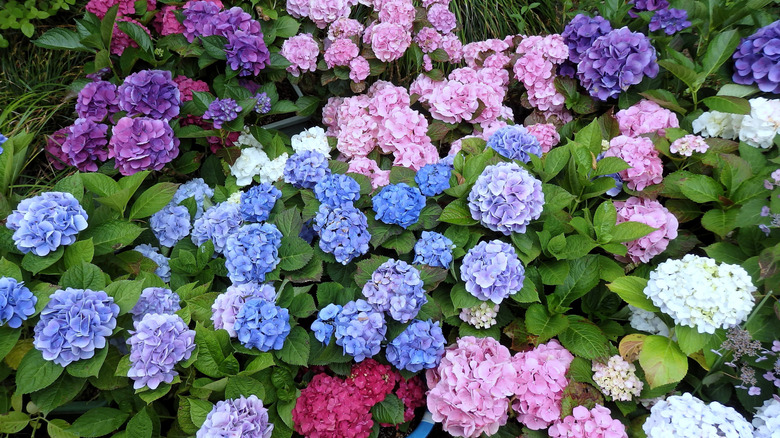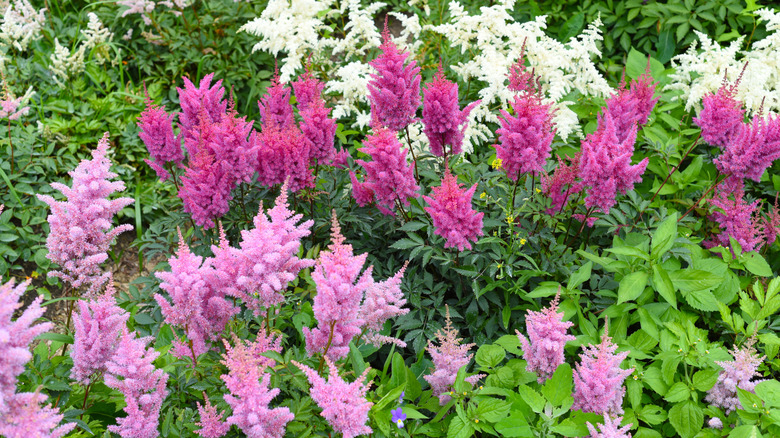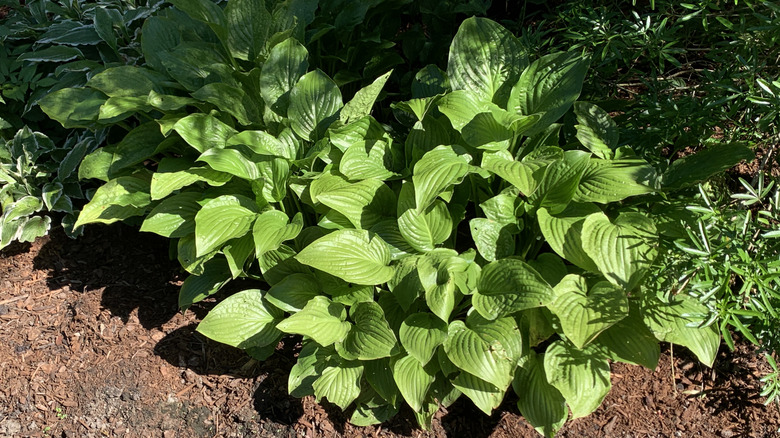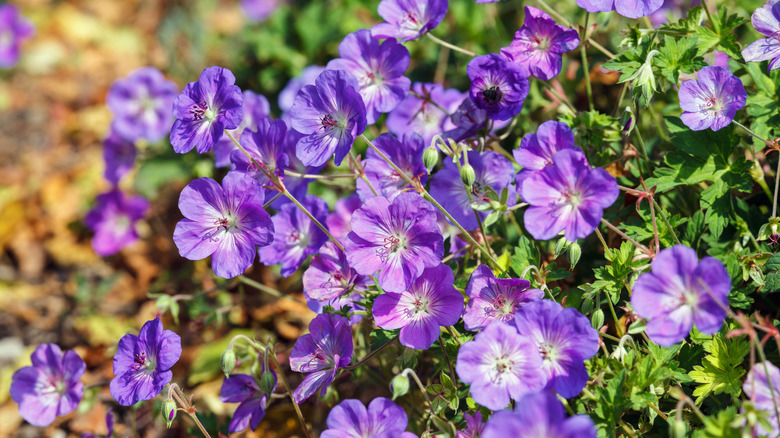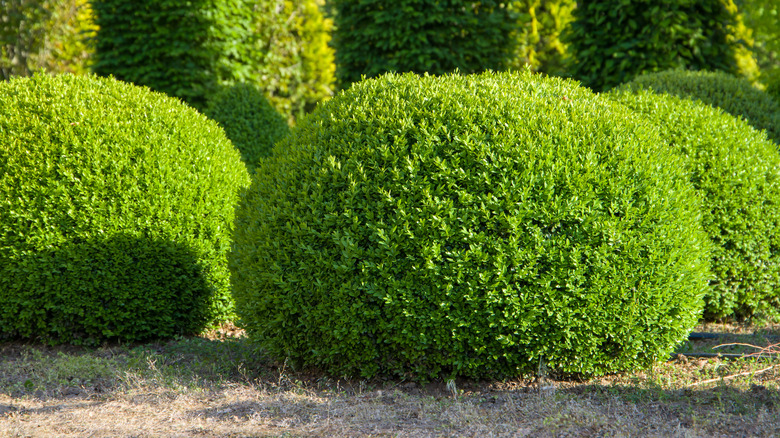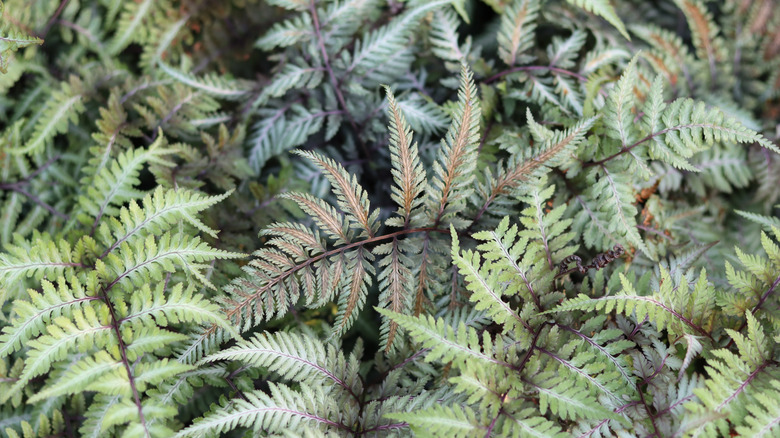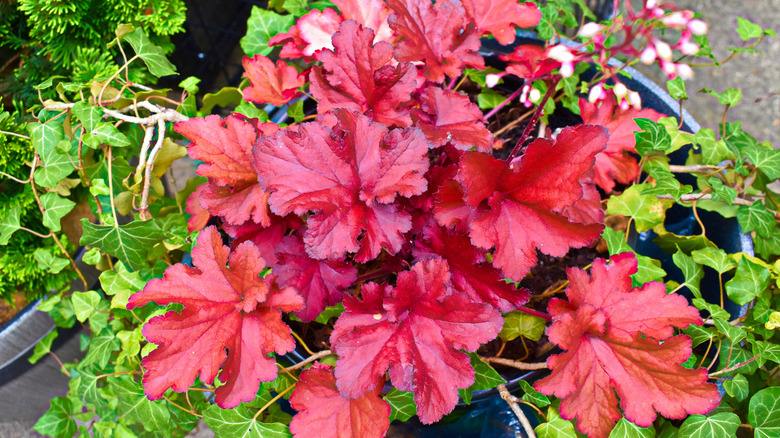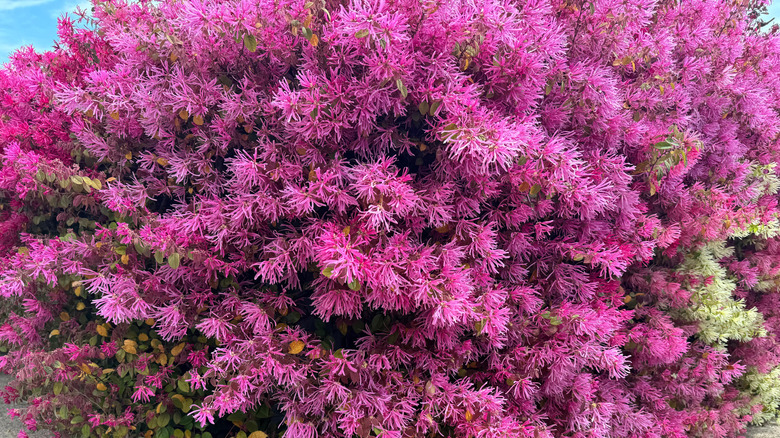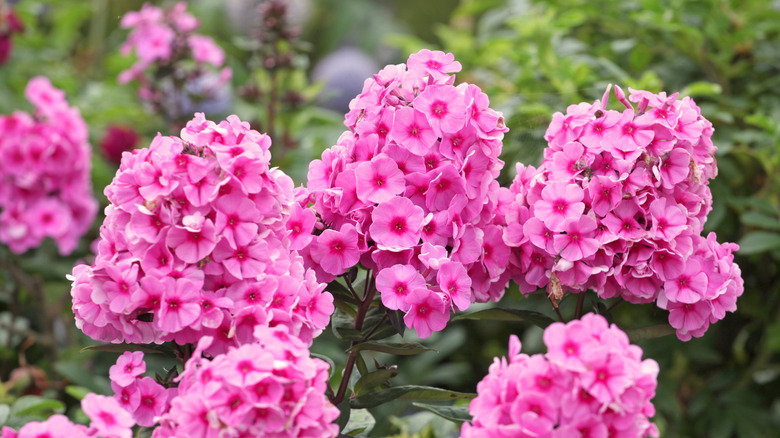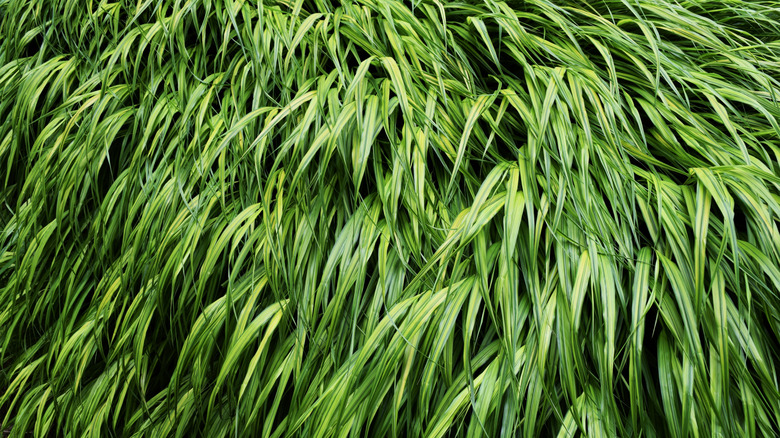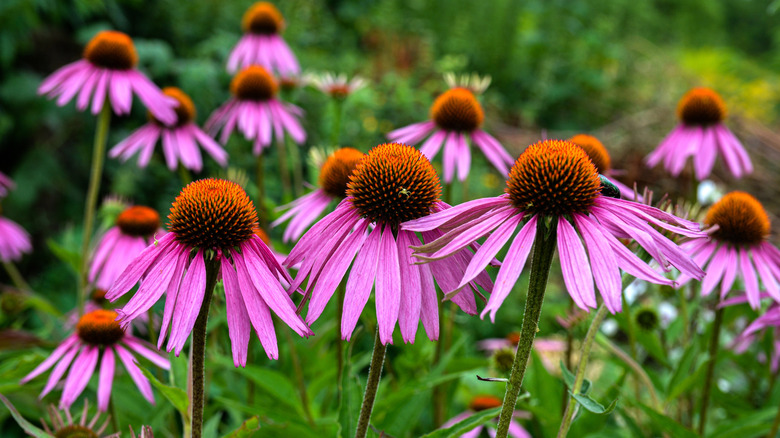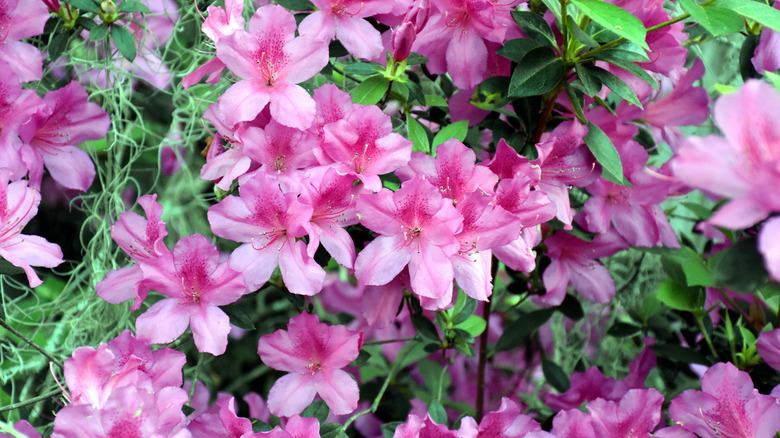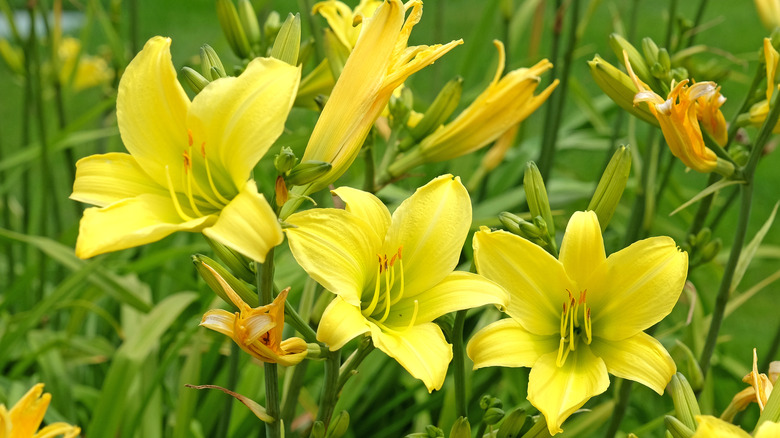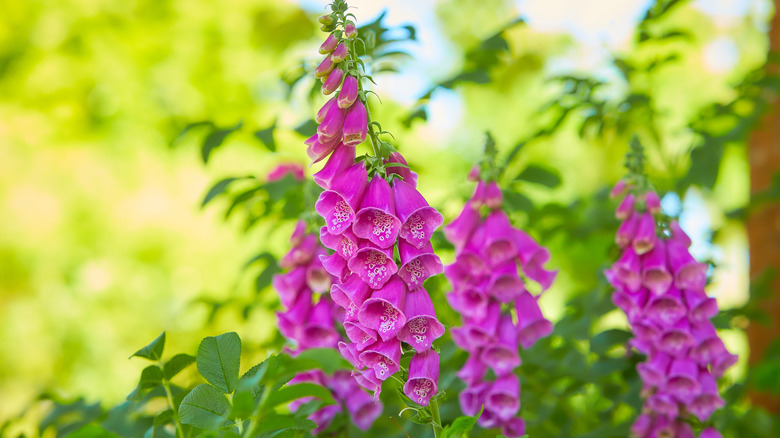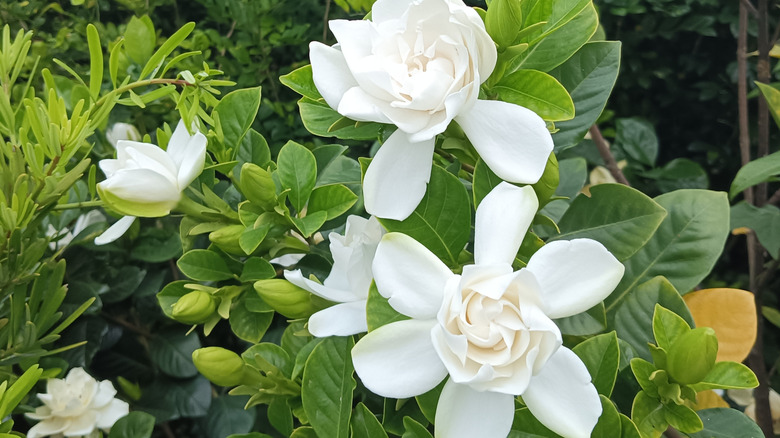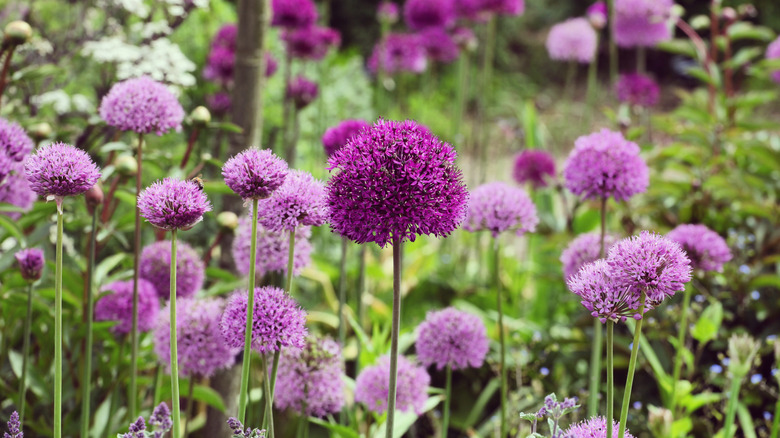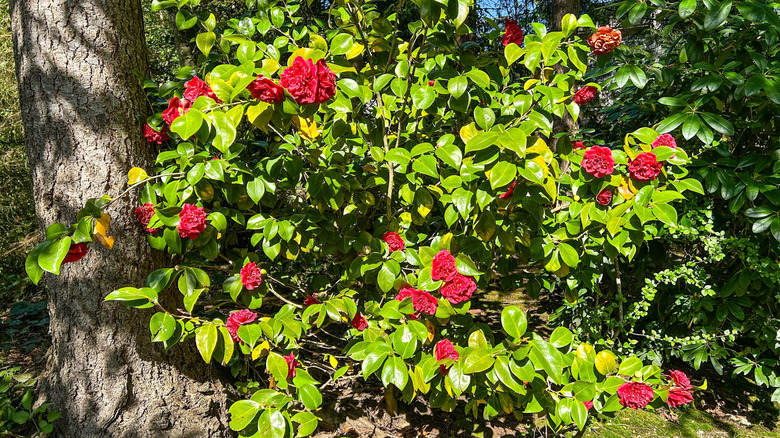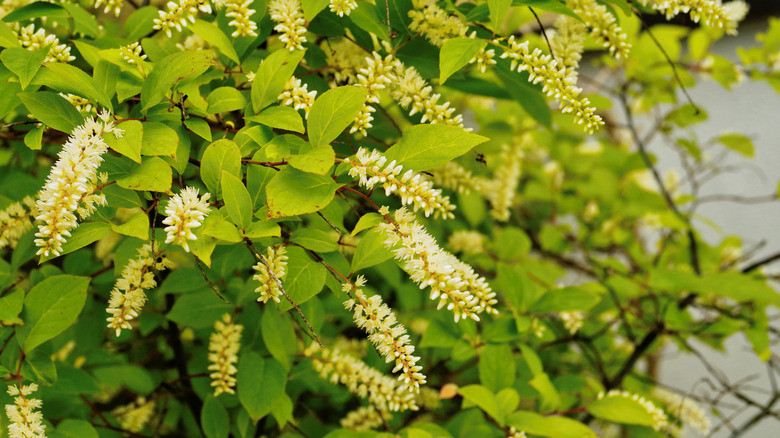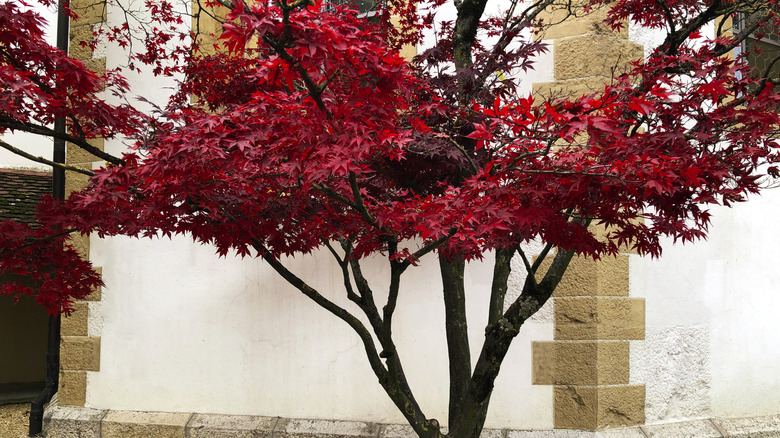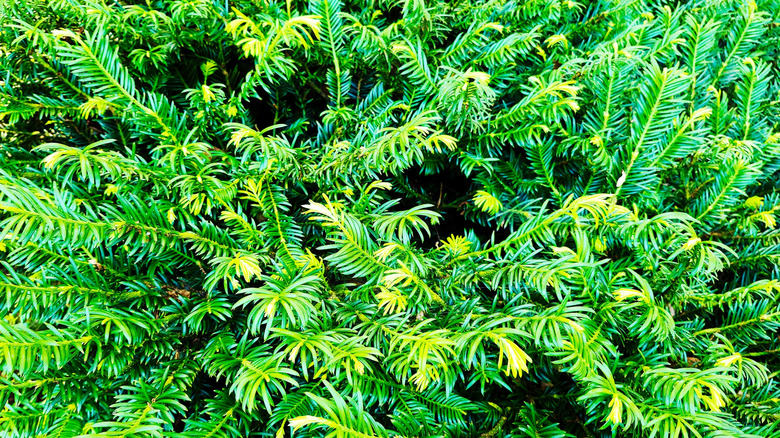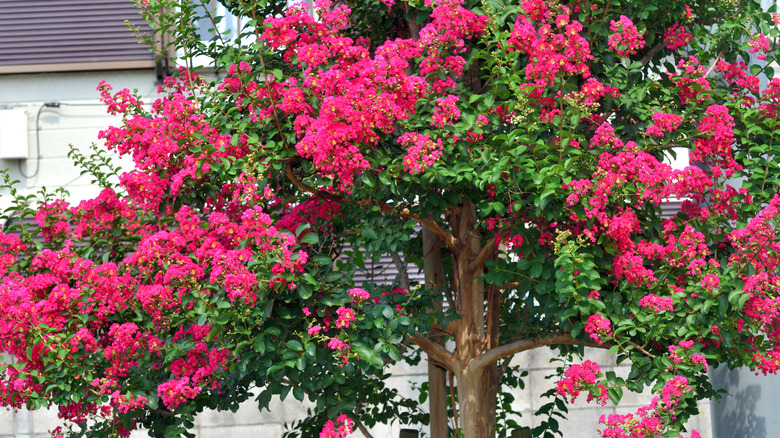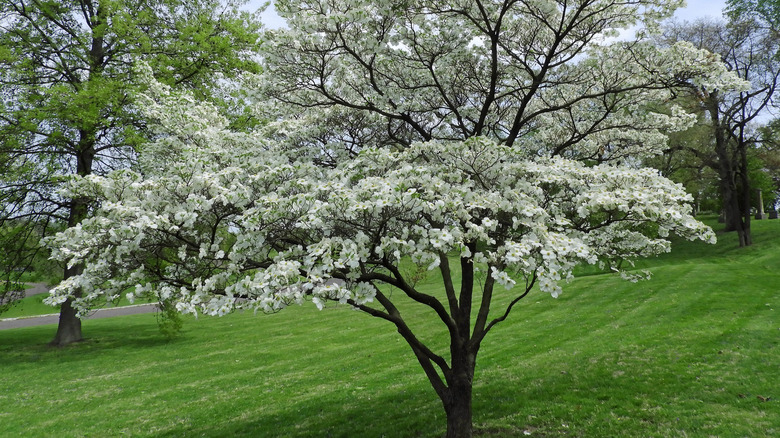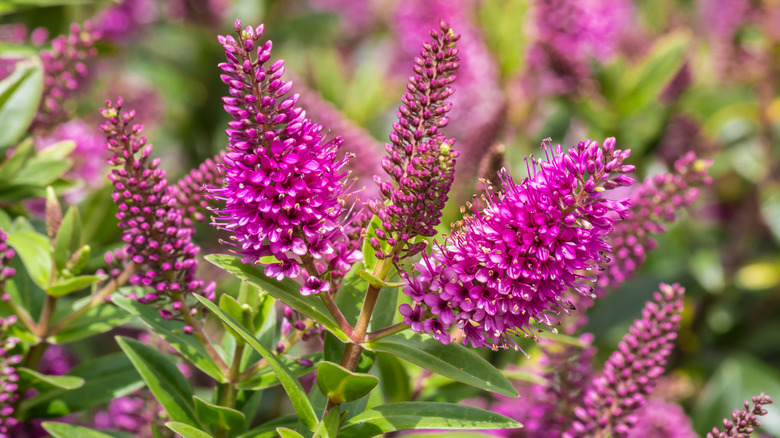22 Best Plants To Grow Next To Hydrangeas For A Thriving Garden
Hydrangeas have been popular with gardeners for generations. Their spherical heads — often painted in earthy azures, unsullied creams, or pink blushes — dancing atop their green foliage are truly a sight to behold. Plus, if you play your cards right and plant masses of lacecap hydrangeas, you can attract pollinators to your garden. However, the benefits don't have to stop at that. Sure, hydrangeas are versatile, but there are many other plants that you can grow alongside them to enhance their and your garden's beauty. Azaleas, daylilies, foxgloves, hostas, ferns, gardenias, and phlox are some such examples, though you'll discover more below.
When choosing companions for hydrangeas, ensure they share similar growing requirements. Most hydrangeas grow best in partial shade in USDA Hardiness Zones 3 through 9. Even varieties that can adapt to full sun usually require afternoon protection in hot climates, and when that's not possible, should be watered generously to compensate for the excess heat. Your companions should be fine with that for easy maintenance.
As for the design, select companions whose blooms or foliage are a monochromatic variation of the hydrangea bloom colors (like pistachio and gold) or complementary (think blue and orange). Also, think in terms of canopies. Use small trees, such as dogwoods or Japanese maples, in the background, and underlay their front with low-lying plants, such as coral bells or Rozanne geranium. Prioritize plants with successive bloom times to ensure a near-constant parade of color. Ahead are 22 best plants to pair with hydrangeas.
Astilbe
Like hydrangeas, astilbe plants (Astilbe japonica) share an affinity for moderate shade and moist soils. When planted in sunny sites, they similarly appreciate some protection from peak summer heat. Their flowery plumes pop up around late spring in pink, burgundy, or white, luring in pollinators. After the show terminates in the summer, their fern-like foliage will continue to complement hydrangeas, adding textural contrast. Use them in borders where deer are a recurring problem. Depending on the variety, astilbe can mature anywhere between 1 foot and 5 feet tall, so layer them accordingly. They're adaptive in Zones 4 to 9.
Hosta
Hostas and hydrangeas make a perfect pair in the garden because they both enjoy organically rich, well-draining soils and are hardy through Zone 3. Hostas' bold foliage, which primarily develops green, gold, blue, or variegated profiles, serves as an eclectic highlight to hydrangea blooms. Certain varieties may even produce bell-shaped flowers during the summer, bringing in a bevy of pollinators, including hummingbirds. Hostas appreciate partial shade, but if they're variegated or blue-leaved, pop them in dappled or deep shade instead. Otherwise, they may become discolored from the intense sun exposure. Avoid growing hostas if you keep pets.
Rozanne geranium
Although most perennial geraniums couple well with hydrangeas, Rozanne geraniums (Geranium 'Rozanne') do it best of them all. And that's partly to do with their long flowering season. Rozanne geraniums burst out bluish-purple flowers in early summer, and maintain this bonanza until frost hits, especially when planted in the cooler ranges of Zones 5 to 8. As their tendrils weave through hydrangea stems, they bring an eclectic touch up top, while at the ground level, their mound chokes off weeds and cools the soil down. They thrive in partial shade or full sun and like alkaline soils.
Boxwood
For a tried-and-tested formula that invokes calm, couple boxwood (Buxus spp.) with hydrangeas, especially if they produce white flowers, like the much-fabled 'Annabelle' variety. In formal gardens, after shaping boxwood plants, locate them in front rows as border edges. This will also lend some structure to the billowing hydrangea foliage. Alternatively, if you wish to leave boxwoods unpruned, grow them next to hydrangeas in a mixed border. Use this combination in Zones 5 to 9, in partially shaded areas. Keep pets away from boxwoods, as they can be mildly toxic, and wear gloves before contact to avoid skin irritation.
Japanese painted fern
Botanically called Athyrium niponicum, Japanese painted ferns are another companion plant that hydrangeas deserve. In early spring, they sprout red-stemmed, lacy foliage that, depending on the cultivar, may be coated in striking silver, purple, or green hues. These ferns maintain their color reliably through the summer until they're frost-killed, serving as gorgeous foliage companions. To take advantage of their deer resistance, plant them as a border. Most species measure 2 feet tall and similarly wide by maturity. You can successfully grow them in Zones 4 through 9 in lightly shaded locations without risking a takeover.
Coral bells
Coral bells (Heuchera spp.), or alumroot, are another strong contender if you're looking to add textural and color contrast. Their velvety foliage and summer blooms (if they're a flowering variety) are available in a broad spectrum of colors and coordinate well with hydrangeas. Since they don't grow taller than 2 feet, use them as understories. Check their labels for growth requirements because some fare better with full sun, while their light-colored counterparts prefer moderate shade. Although adaptive to Zones 3 through 9, only H. villosa can withstand high heat and humidity.
Chinese fringe flower
If your hydrangeas are growing in moist, acidic soils, consider underplanting them with the dwarf cultivars of Chinese fringe flower (Loropetalum chinense). Think options like 'Purple Pixie' or 'Snow Muffin.' They offer attractive foliage and flowers, and usually stay under 2 feet, although they spread much wider. After establishment, they're drought tolerant and usually escape deer browsing. Plus, you don't ever have to worry about pruning these beautiful garden plants, save for eliminating diseased or decaying stems. Chinese fringe flowers can grow in Zone 7 and above, preferably with afternoon protection and mulching.
Phlox
Phlox flowers are beautiful companion plants Martha Stewart loves pairing with hydrangeas, and if you keep an English or cottage-themed garden, you should definitely try out this combination. Garden phlox (Phlox paniculata) packs more color and fragrance in garden borders during mid-summer, when other flowers fade from heat stress. Its blooms can last into mid-fall, drawing in hummingbirds and butterflies. But if you find it grows too tall for your garden or isn't sufficiently cold hardy, switch over to woodland phlox (P. divaricata). It tops out at 1 foot and can be grown in Zone 3 and above.
Japanese forest grass
For those seeking beautiful ground covers that work perfectly under hydrangeas, Japanese forest grass or Hakone grass (Hakonechloa macra) is a nice option. These ornamental grasses typically stand under 2 feet tall, conveniently masking the bare ankles of hydrangeas. Simultaneously, their arching mounds add a stunning, waterfall-like effect that can be valuable to frame walkways, edges, and borders. They thrive in rich, moist locations and display their most saturated colors (or variegation if they have it) when they're not directly exposed to the sun. Though hardy through Zone 5, their foliage usually dies back in the winter.
Purple coneflower
When you need an additional splash of color, look toward purple coneflowers (Echinacea purpurea) — their flowering period overlaps with hydrangeas all summer long. Add to that, they bring in a bevy of pollinators, including butterflies and bees, making for a truly thriving garden. Even when the blooms are out, they'll keep your landscape animated with birdsong as finches seek them for their tasty seeds. Purple coneflowers thrive in moderately shaded sites that carry moist, well-draining soils. They can grow about 4 feet tall and half as wide, and can be grown in Zones 3 to 8.
Azaleas
In woodland settings, azaleas and hydrangeas can make a perfect pair. After all, both thrive in organically rich, acidic, and moist soils. They also match on their demands for morning sun exposure with afternoon protection, or dappled shade. In bloom, hummingbirds find these flowers delightful. As they're available in myriad sizes, ranging from 2 feet to 12 feet, you can use them either as underplantings or overstories. For maximum impact, look for repeat-flowering varieties from the Encore, Re-Bloom, or Bloom-A-Thon series. As all parts of azaleas are toxic when ingested in large quantities, keep curious kids and pets away.
Daylily
A singular flower might only last a day, but you can expect daylily (Hemerocallis spp.) plants to keep flowering for nearly four weeks in the summer — more than 10 if they're a reblooming variety. Depending on whether you're looking to complement or successively time the hydrangea blooms, look for early bloomers or those that withstand frost. Daylilies thrive in Zones 3 through 9 and can take partial shade (some pastel varieties prefer it). Only if your yard isn't troubled by deer should you consider interplanting daylilies in mixed beds — you might find the plants pruned to the ground overnight.
Foxglove
Foxglove (Digitalis spp.) plants add a touch of whimsy and vertical dimension to any yard. Around late spring, they shoot out feathery spires chock full of nodding flowers that scream "nectar" at pollinators. Foxgloves remain in bloom through mid-summer and must be deadheaded to keep their self-seeding tendencies in check. Like hydrangeas, they prefer the morning sun-afternoon shade combination and organically-rich, moist soils. They can be successively grown in Zones 4 through 9. Cardiac glycosides in foxgloves make them highly pest-resistant, albeit equally poisonous to pets and humans on accidental consumption.
Gardenia
If you live in Zone 7 or above, consider growing gardenia next to your hydrangeas to add unbeatable beauty to your garden, in addition to a pleasant fragrance. Also known as Cape jessamine, gardenia (Gardenia jasminoides) produces waxy, cream white flowers from spring through summer. These petite blooms team well with the more globular heads of hydrangeas, all the while attracting pollinators. They also keep your backyard birds interested with their berries that arrive in the fall. Gardenias can grow 8 feet tall and similarly wide. Site them where your pets are unlikely to munch to avoid untoward complications.
Alliums
During the spring-summer transition, when many hydrangea varieties, like limelight hydrangeas, aren't actively blooming, planting them near alliums in the garden can create visual interest. Besides, once alliums have exhausted their blooms, hydrangeas can serve as the perfect foil to their foliage-only appearance. Alliums can grow about 3 feet tall and are popular with pollinators, though deer steer clear. You can easily grow them in Zones 4 to 9 in well-draining, fertile soils exposed to the sun in moderation. Although young leaves are edible, consumed in higher quantities, they can be slightly toxic, as can other plant parts.
Camellias
Camellias kick into action when hydrangeas go dormant for the winter. Depending on the variety, you can expect them to start flowering in September (C. Japonica) or December (C. sasanqua), with the show lasting well into April. This also means pollinators will thank you for the delicious nectar that's otherwise scarce around this time. Camellias grow well in partial shade in Zones 6 through 10, away from desiccating winter winds. Acidic, well-draining soils are a must. Do note that camellias require ample care, as they're highly susceptible to various pests and diseases, especially scales and blossom rot.
Virginia sweetspire
For hydrangeas planted in sunny, acidic beds, consider complementing them with 'Henry's Garnet' Virginia sweetspire (Itea virginica 'Henry's Garnet'). From May to June, this deciduous shrub will enthrall you and the local pollinators with aromatic, white spikes. Edible fruits will grace their foliage in the fall, which may well persist into next year, adding immense ornamental interest. 'Henry's Garnet' prefers humusy, moist soils but isn't too fussy about drainage or pH levels. It may retain semi-evergreen foliage in warmer climes, remaining deciduous as in the northern ranges of adaptive Zones 5 to 9. Watch out for suckers.
Japanese maples
Long after hydrangea blooms have dried on their stems, you can depend on Japanese maple (Acer palmatum) trees to hold down the fort, pleasing your eyes with their stunning fall foliage. Depending on the cultivar, the green leaves can turn red, orange, or bronze in the cool weather, enticing birds with harbor. Around spring, they may also boast red or lavender flowers that moths and pollinators are drawn to. Plant Japanese maples in dappled sunlight away from cold winds in Zones 5 to 8. Watch for volunteer seedlings if you don't want the tree taking over.
Japanese plum yew
When you want to add a vertical accent to your hydrangea shrubs but find junipers lacking, opt for Japanese plum yew (Cephalotaxus harringtonia). Hardy in Zones 6 through 9, their needle-like foliage sprays out in a V-shaped form that can add fluidity in informal hydrangea beds. These conifers can grow between 5 and 10 feet tall, albeit slightly wider. Keep them in partial shade for greater color retention in the winters, especially if you live where they must grapple with high heat and humidity. Avoid touching their seeds, leaves, and bark ungloved, as they can be poisonous.
Crape myrtles
Another plant that pairs well with hydrangeas planted in full sun is crape myrtle (Lagerstroemia indica). Its rose-red flowers, usually in bloom from June through September in Zones 6 through 9, attract many pollinators. Its foliage, too, adds ornate value, changing from red-blushed green into a solid green that welcomes fall by assuming burnished orange or burgundy overcoats. Be creative and match hydrangeas to these ever-changing colors, or even better, to the peeling bark that's on full display after the plant defoliates. In limited spaces, grow semi-dwarf varieties like 'Chickasaw,' 'Acoma,' or those in the Delta series.
Flowering dogwood
If your hydrangeas are receiving too much sun or when you want to create a shaded spot to adore them up close, consider planting flowering dogwood (Cornus Florida). Their 30-foot-wide canopies (unless they're a dwarf cultivar) will promptly offer the necessary shade in Zones 5 through 9, ensuring your shade-loving hydrangeas can bloom with aplomb. Side-by-side, you get to enjoy a beautiful specimen that also doubles as a pollinator magnet, with butterflies using their foliage for egg-laying and flowers for nectar. Flowering dogwoods can withstand heat, deer browsing, and storm damage.
Hebe
In Zones 7 and above, you can also group hydrangeas with hebes. These delightful evergreen shrubs are available in a rainbow of colors, including purple, blue, crimson, and pink. But before purchasing, check the label for bloom timings. While most are summer-flowering, some hebes like 'Hobby' and 'Purple Picture' boast flowers in late fall or early winter. If you'd rather match hydrangeas to their foliage or brighten your shady garden, look into silver-leaved cultivars like 'Quicksilver' or 'Boughton Dome.' Hebes grow best in friable, organically rich soils with good drainage, and should be watered generously.
